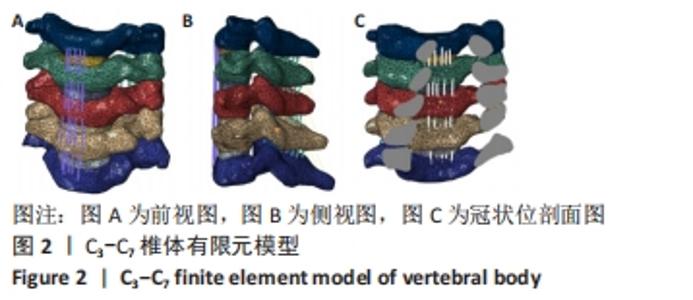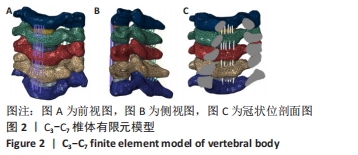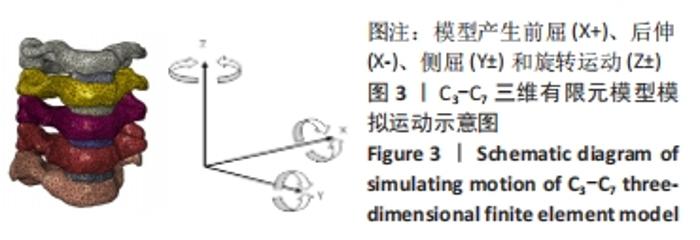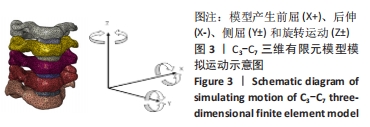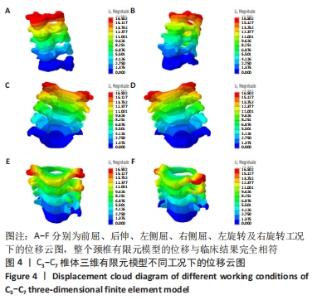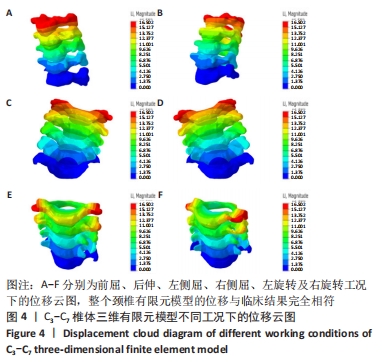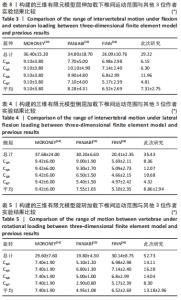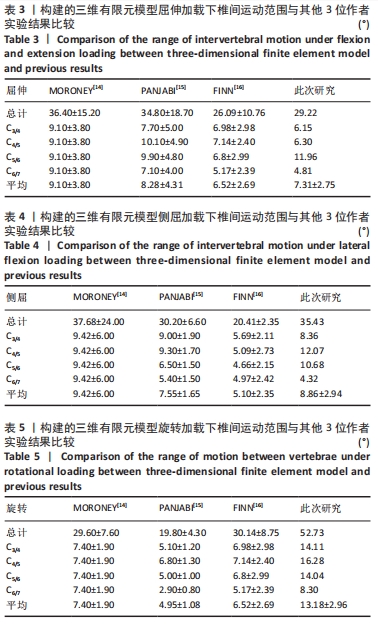[1] 刘淼, 尚显文, 宁旭, 等.椎弓根螺钉及颈椎体螺钉置入内固定后的生物力学及稳定性比较[J].中国组织工程研究,2016,20(35):5210-5215.
[2] LI Y, GLOTZBECKER MP, HEDEQUIST D, et al. Pediatric spinal trauma. Trauma. 2012;14(1):82-96.
[3] DONG LQ, LI GY, MAO HJ, et al. Development and validation of a 10-year-old child ligamentous cervical spine finite element model. Ann Biomed Eng. 2013;(41) : 2538-2552.
[4] ZHANG QH, TAN SH, CHOU SM. Effects of bone materials on the screw pull-out strength in human spine. Med Eng Phys. 2006;28(8):795-801.
[5] WANG HH, WANG K, DENG Z, et al. Effects of facet joint degeneration on stress alterations in cervical spine C5-C6: A finite element analysis. Math Biosci Eng. 2019;(16):7447-7457.
[6] ZHAO XF, ZHAO YB, LU XD, et al. Development and Biomechanical Study of a New Open Dynamic Anterior Cervical Nail Plate System. Orthop Surg. 2020;(12):254-261.
[7] ZAFARPARANDEH I, ERBULUT DU, LAZOGLU I, et al. Development of a finite element model of the human cervical spine. Turk Neurosurg. 2014;(24):312-318.
[8] HUSSAIN M, NATARAJAN RN, CHAUDHARY G, et al. Relative contributions of strain-dependent permeability and fixed charged density of proteoglycans in predicting cervical disc biomechanics: a poroelastic C5-C6 finite element model study. Med Eng Phys. 2011;33(4):438-445.
[9] ZHANG QH, TEO EC, NG HW, et al. Finite element analysis of moment-rotation relationships for human cervical spine. J Biomech. 2006;1(39):189-193.
[10] KOTHE R, RÜTHER W, SCHNEIDER E, et al. Biomechanical analysis of transpedicular screw fixation in the subaxial cervical spine. Spine (Phila Pa 1976). 2004;(29): 1869-1875.
[11] 刘颖,李志军.7-12岁儿童颈椎间盘的影像学三维形态测量研究[J].中国民康医学,2015,27(14):118.
[12] 吕文乐,阮世捷,李海岩,等.6岁儿童全颈有限元模型的构建及验证[J].医用生物力学,2016,31(2):95-101.
[13] YOGANANDAN N, PINTAR FA, KUMARESAN S, et al.Pediatric and small female neck injury scale factor and tolerance based on human spine biomechanical characteristic. Proceedings of IRCOBI Conference. 2000:21-23.
[14] MORONEY SP, SCHULTZ AB, MILLER JA, et al. Load-displacement properties of lower cervical spine motion segments. J Biomech. 1988;21(9):769-779.
[15] PANJABI MM, CRISCO JJ, VASAVADA A, et al. Mechanical properties of the human cervical spine as shown by three-dimensional load-displacement curves. Spine. 2001;26(24):2692-2700.
[16] FINN MA, BRODKE DS, DAUBS M, et al. Local and global subaxial cervical spine biomechanics after single-level fusion or cervical arthroplasty. Eur Spine J. 2009; 18(10):1520-1527.
[17] NIKKHOO M, CHENG CH, WANG JL, et al. Development and validation of a geometrically personalized finite element model of the lower ligamentous cervical spine for clinical applications. Comput Biol Med. 2019;109:22-32.
[18] CAO SN, CHEN YZ, ZHANG F, et al. Clinical Efficacy and Safety of “Three-Dimensional Balanced Manipulation” in the Treatment of Cervical Spondylotic Radiculopathy by Finite Element Analysis. Biomed Res Int. 2021;2021:5563296.
[19] 黄海珊,马航展,李波.骨质疏松椎体中不同螺钉内固定方式的生物力学有限元分析[J].中国医学创新,2018,15(9):121-124.
[20] KALLEMEYN N, GANDHI A, KODE S, et al. Validation of a C2-C7 cervical spine finite element model using specimen-specific flexibility data. Med Eng Phys. 2010; 32(5):482-489.
[21] ZHANG QH, TEO EC, NG HW, et al. Finite element analysis of moment-rotation relationships for human cervical spine. J Biomech. 2006;39(1):189-193.
[22] ZHIGANG L, GUANGHUI S, ZHONG QS, et al. Development, validation, and application of ligamentous cervical spinal segment C6-C7 of a six-year-old child and an adult. Comput Methods Programs Biomed. 2020;183:105080.
[23] KUMARESAN S, YOGANANDAN N, PINTAR FA. Finite element analysis of the cervical spine: a material property sensitivity study. Clin Biomech (Bristol, Avon). 1999;14(1):41-53.
[24] 曹立波,魏嵬,张冠军.3岁儿童C4-C5颈椎有限元模型开发及拉伸、弯曲验证[J].中国生物医学工程学报,2015,34(1):37-45.
[25] RAPHAËL D, FRANK MR, CAROLINE D, er al. Three-year-old child neck finite element modelization. Eur J Orthop Surg Traumatol. 2006;16(3):193-202.
[26] 杜治青. 三岁儿童颈部有限元模型的构建及损伤分析[D].天津:天津科技大学,2016.
[27] CUSICK JF, PINTAR FA, YOGANANDAN N. Biomechanical alterations induced by multilevel cervical laminectomy. Spine (Phila Pa 1976). 1995;20(22):2392-2398; discussion 2398-2399.
[28] 吴金正. 3-12 岁儿童颈椎材料参数化研究[D]. 长沙:湖南大学,2018.
[29] YAMADA H, EVANS FG. Strength of biological materials.Baltimore: Williams & Wilkins Co. 1970:99-104.
[30] CAI XY, SANG D, YUCHI CX, et al. Using finite element analysis to determine effects of the motion loading method on facet joint forces after cervical disc degeneration. Comput Biol Med. 2020;116:103519.
[31] LIU N, LU T, WANG Y, et al. Effects of new cage profiles on the improvement in biomechanical performance of multilevel anterior cervical Corpectomy and fusion: a finite element analysis. World Neurosurg. 2019;129:e87-e96.
|
